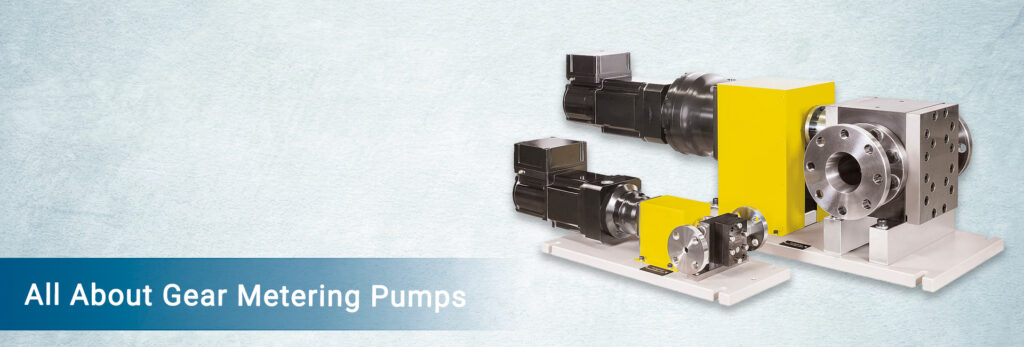Ever wondered how factories manage to fill liquid into small vials with exact precision and no wastage? The gear metering pump is the brain behind this seamless function. In any industrial setting, precision and control are sought-after traits and play a vital role in the accuracy of manufacturing.
This engineering tool delivers liquids with accuracy, ensuring consistent product quality and process reliability.
At Patvin, we design and manufacture effective dispensing systems to enhance flow efficiency in any industry, regardless of the fluid type. Let us explore all about gear measuring pumps, including the different kinds, how they work, how to buy one, and important technical details.
What is a Gear Metering Pump?
A gear metering pump is a positive displacement pump that relies on a pair of gears: one driving and one driven, encased in a compact chamber. The liquid is drawn in through the inlet and transported out through the outlet as the gears turn. This releases fluid at a continuous rate proportionate to rotation. Such features make it popular among critical industrial pumps.
Types of Gear Metering Pumps
A variety of gear metering systems are available on the market. Different types are designed for specific applications in mind. While some manage media with varying viscosities, others may satisfy the needs of wind energy, aviation, and other sectors. Four types of these pumps are described below:
Type | Description |
External Gear Metering Pump | Next to each other are two identical gears. Very accurate, better for higher pressures and doses. Great for chemical dosing or ink transfer. |
Internal Gear Metering Pump | An inner small gear turns inside a bigger outer gear. Viscous/shear-sensitive fluids like cosmetics or syrups can benefit from a smoother, softer flow. |
Multiple Gear Pump | Uses more than one pair of gears to boost power. Great for commercial uses on a large scale. |
Gear Pumps with Inline Mounting | Made to fit into small spaces in systems; often used for specific mounting needs. |
Applications
These machines are reliable, accurate, and hence find applications in multiple sectors owing to their utility and high functional value.
Manufacturing & Processing
- Dispenses acids, caustic liquids, dyes, adhesives, and resins accurately.
- Maintains high-viscosity polymer, lubricant, and hydraulic oil flow.
Food, Beverage & Pharmaceuticals
- Manages syrups, oils, and flavorings without the risk of contamination.
- Cleans and precisions pharmaceutical formulation.
Utilities & Environmental Systems
- Properly dose pH and chlorine in water treatment systems.
- Controls industrial utility fluids safely and efficiently.
Want to learn how metered filling improves dosing accuracy in industries like pharma and food? Read our comprehensive guide on Metered Filling Machines.
Advantages
Gear measuring pumps are widely used as they are well-designed and work well. This is what distinguishes them:
- Excellent accuracy: Provides exact, steady flow rates with little pulsation or slide.
- Non-pulse operation: Delivers uniformly within the rated process pressure.
- Versatile Viscosity Handling: Efficiently handles fluids with low to very high viscosities.
- Volumetric efficiency: Tight internal clearances save energy and boost performance.
- Durable Build: Stainless steel and ceramics withstand corrosion and abrasion.
- Lightweight and low-maintenance: Fewer moving parts mean easier installation.
These properties make them suitable for industrial and commercial metering system sealants.
Key Specifications
Knowing what to look for in a gear pump might be difficult. Your needs for dosing or moving fluids will determine the type of pump you need. In general, one should consider the following features when assessing gear metering pumps:
Specification | Typical Values/Range |
Flow Rate | Precise dosing from 0.0005 L/min up to hundreds of L/min, depending on the model |
Pressure | Up to 10,000 psi (high-end models), typical industrial models 3–150 bar |
Viscosity Range | 1 cSt up to 2,000,000 cP |
Accuracy | ±0.3% or better per revolution |
Material Options | Stainless steel, ceramics, specialized alloys |
Sealing Options | Lip seals, mechanical seals, magnetic couplings |
Rotation Direction | Usually specified (clockwise/counterclockwise) |
Speed Range | Typically 10–200 rpm (may vary by model/design) |
Buying Guide
The purchasing of gear metering pump systems requires consideration of several aspects. Some of them are :
- Consider viscosity, abrasiveness, and corrosion when choosing pump materials.
- Know your flow rate, pressure, and temperature for pulse-free operation.
- Identify mounting type (inline or base) and verify automation compatibility.
- Check for easy maintenance, sealing, spare parts, safety features, and technical support.
Conclusion
Gear metering keeps critical things running smoothly, precisely, and reliably. Thus, knowing your needs and finding the proper solution is key to choosing the right pump.
At Patvin, our goal is to implement intelligent solutions that last and are tailored to your needs.
Explore our Gear Metering Pump solutions to find the right fit for your application, or contact our staff to learn more.
For a deeper understanding of how gear pumps fit into broader dispensing setups, explore our guide on Fluid Handling Systems.
FAQ's
Gear meters give you a steady flow that is very accurate and does not have any pulses. They are ideal for applications where small flow changes can affect product quality or safety.
Changing the temperature of a fluid can make it thicker or thinner, which changes how it flows. Thus, a pump model should match your fluid type and temperature range.
Without fluid to lubricate the gears, running dry can harm the pump. Using a dry-run protection system or keeping the pump primed are the best options.



